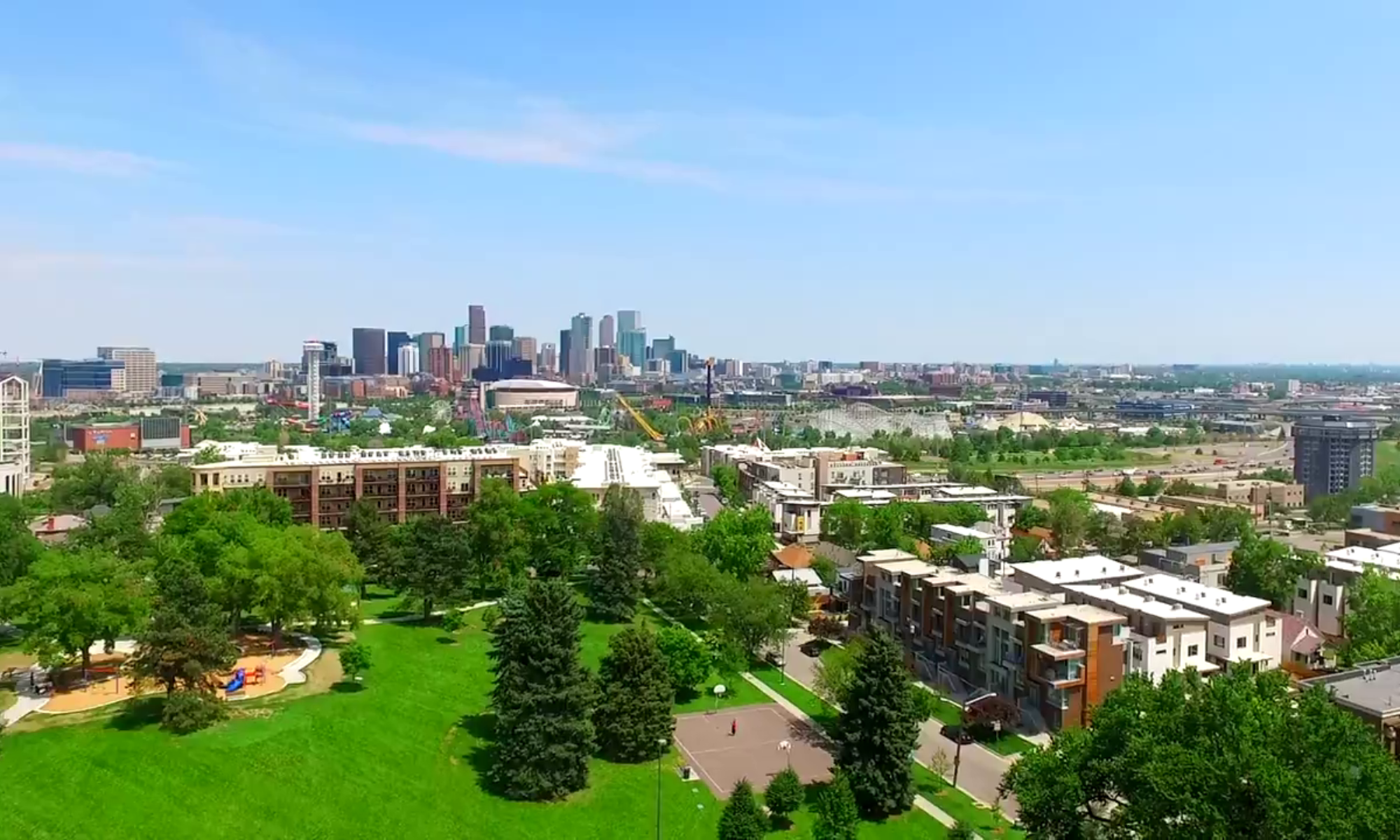Jefferson Park is one of the oldest neighborhoods in Denver, with buildings dating to the 1880s. It takes its name from the large five-acre park, a former city dump, located at the southeast corner of West 23rd Avenue and Clay Street in the heart of the neighborhood. Jefferson Park includes parts of the original Congressional Grant of 1860 and part of the incorporated Town of Highlands. The Town of Highlands was founded in 1871 and incorporated in 1875, before being annexed by Denver in 1896. Jefferson Park is part of a larger area that was commonly known as “North Denver” after the annexation of the Town of Highlands. Subdivisions within Jefferson Park date to as early as 1871.
Located across from Denver on the west side of the Platte River, the Town of Highlands looked down on its larger neighbor, both literally and figuratively. Highlands was intended to be an elite suburb where businessmen working in Denver resided above and away from the smog, corruption and congestion of the big city. Clean living was encouraged, and residents touted their artesian wells, pure air and lack of drinking establishments. One of the earliest streetcar lines in Denver, built in 1872, ran along Emerald Avenue (today’s West 25th Avenue), connecting the suburb to downtown Denver. This is also why the current 25th Avenue is so much wider than surrounding streets.
While many residents of Highlands commuted across the river to jobs in Denver, others were employed by businesses within the town boundaries. The Rocky Mountain Brewery, located on the eastern edge of today’s Jefferson Park, was founded in 1859 by John Good. Philip Zang joined the brewery in 1869, eventually purchasing it from Good and renaming it the Zang Brewery. City directories and census records show that many early area residents were employed by the brewery. The Old Homestead Bakery, formerly located at the northeast corner of today’s West 27th Avenue and Decatur Street, was another well-known area business. Founded in 1902 by William J. Meikleham, the bakery employed seventy workers and shipped its goods as far away as Wyoming, Nebraska, Kansas and New Mexico. Meikleham and his family lived next to the bakery in a substantial eclectic home that was demolished in 2017 at the northwest corner of West 27th Avenue and Clay Street.
A commercial district serving the needs of the neighborhood developed along the West 25th Avenue streetcar line between Eliot Street and Federal Boulevard. Development of the district began in the late 1890s and continued through the 1920s. The district, anchored by mixed-use two-story brick buildings with corner entrances and display windows, also contains a movie theater. Other small turn-of-the-century commercial buildings were located on street corners throughout the neighborhood, providing goods and services to nearby residents. A good example of an early corner grocery still stands at the southeast corner of West 26th Avenue and Decatur Street.
While most homes within Jefferson Park were fairly modest and middle-class, grander homes were built along the edges of the neighborhood. Federal Boulevard, located at Jefferson Park’s western edge, was formerly known simply as “The Boulevard” and later “Boulevard F.” In the late 19th century, Federal was lined with the stately residences of doctors and successful businessmen. On the eastern edge of Jefferson Park, the estate of General Roger Woodbury took up several city blocks. Located at West 25th Avenue and Alcott Street, Woodbury’s mansion was demolished in the early 1970s to make way for the Diamond Hill office complex.
After World War II, the population of the neighborhood steadily declined. Single family residences were razed during this period to make way for office and commercial uses, as well as for new low-rise apartment blocks. Homes at the southern edge of the neighborhood were demolished to make way for expanded parking for the original Mile High Stadium located at the southwest corner of Clay Street and the current Mile High Stadium Circle (formally West 20th Avenue).
Presently, Jefferson Park is undergoing a dramatic transformation. A booming economy and a close proximity to downtown have made Jefferson Park an attractive area for new development. Much like in the post-war period, single family homes are being razed to make way for increased density.
This history was provided by the Discover Denver project. Click here to view their full survey report for Jefferson Park.
